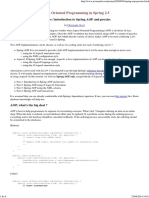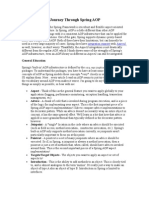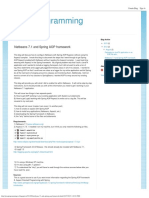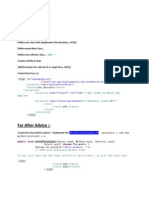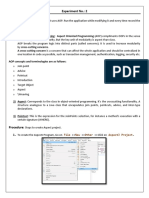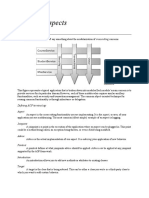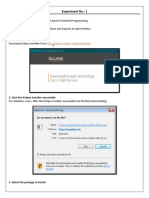Assignment 1: Spring Boot AOP (Aspect
Oriented Programming)
Objective
To understand how Spring AOP works by creating a simple application that logs method
execution time using an Aspect.
Part 1: Setup
1. Create a new Spring Boot project (via https://start.spring.io/).
o Dependencies:
▪ Spring Web
▪ Spring AOP
Part 2: Create a Service
1. Create a class BookService with methods:
2. public void addBook(String title) {
3. System.out.println("Book added: " + title);
4. }
5.
6. public void getBookById(Long id) {
7. System.out.println("Fetching book with id: " + id);
8. }
Part 3: Create an Aspect
1. Create a class LoggingAspect with annotations:
o @Aspect
o @Component
2. Add advice methods:
o @Before → log before method runs
o @After → log after method runs
o @Around → measure execution time
Example:
@Before("execution(* com.example.demo.service.BookService.*(..))")
�public void logBefore(JoinPoint joinPoint) {
// - - - -- ---
Part 4: Test with CommandLineRunner
1. In the main application class, use a CommandLineRunner bean:
2. @Bean
3. CommandLineRunner run(BookService bookService) {
4. return args -> {
5. bookService.addBook("Spring in Action");
6. bookService.getBookById(101L);
7. };
8. }
Expected Output (in Console)
Before Method: addBook
Book added: Spring in Action
After Method: addBook
Before Method: getBookById
Fetching book with id: 101
After Method: getBookById
Outcome:
Learners will see how AOP intercepts method calls and adds cross-cutting concerns (logging)
without modifying the actual service logic.





